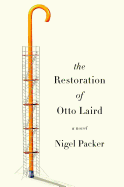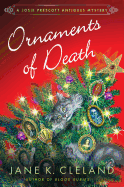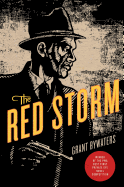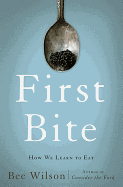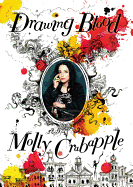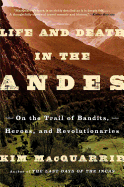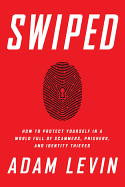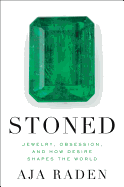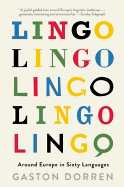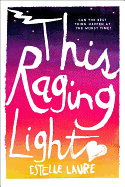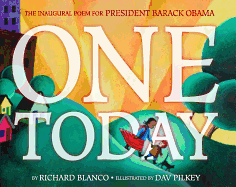In addition to our Shelf Awareness Best Books of 2015, we asked our reviewers for a few of their favorite books of the year. We started with nonfiction; today we feature fiction.
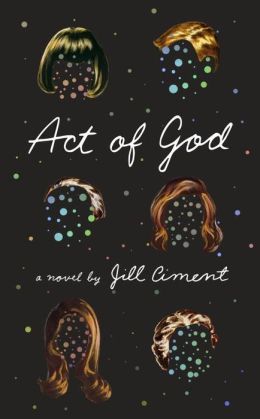 The premise of Act of God by Jill Ciment (Pantheon, $24) may seem zany--a fungus overtakes Brooklyn, beginning with a tiny mushroom that identical 64-year-old twin sisters find sprouting in the closet of their deceased mother's rent-controlled apartment--but the absurdity enriches thought-provoking insights into the human condition. --Kathleen Gerard
The premise of Act of God by Jill Ciment (Pantheon, $24) may seem zany--a fungus overtakes Brooklyn, beginning with a tiny mushroom that identical 64-year-old twin sisters find sprouting in the closet of their deceased mother's rent-controlled apartment--but the absurdity enriches thought-provoking insights into the human condition. --Kathleen Gerard
Marguerite Reed's debut science fiction novel, Archangel (Arche Press, $16 paperback), takes on vegetarianism, religion, gender and violence with confidence while it spins a compelling plot with a strong female protagonist who just might have bitten off more than she can chew, trying to fix her planet's problems while raising her daughter. --Rob LeFebvre
In The Book of Aron (Knopf, $23.95), Jim Shepard flawlessly channels the artless voice of an adolescent narrator observing the hardships of his family and friends in the early days of the Warsaw Ghetto, revealing the horror of that nightmare world while ennobling its unimaginable suffering through the gift of art. --Harvey Freedenberg
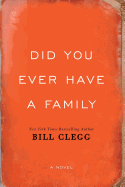 Bill Clegg's debut novel, Did You Ever Have a Family (Scout Press, $26), centers on a woman who loses everything--her boyfriend, her daughter, her home, her sense of self--in a devastating house fire. But it is, at the same time, so much more than that: a novel that explores grief and loss, humanity, and the many ways the horrors of the world push us apart and pull us back together again. --Kerry McHugh
Bill Clegg's debut novel, Did You Ever Have a Family (Scout Press, $26), centers on a woman who loses everything--her boyfriend, her daughter, her home, her sense of self--in a devastating house fire. But it is, at the same time, so much more than that: a novel that explores grief and loss, humanity, and the many ways the horrors of the world push us apart and pull us back together again. --Kerry McHugh
Go Set a Watchman by Harper Lee (HarperCollins, $27.99): Sure, it's not To Kill a Mockingbird, but this first draft still showcases Lee's graceful, introspective and haunting writing style, and her gritty tale of dawning parental disillusionment and simmering racial tensions packs a modern-day punch. --Kevin Howell
Beginning in 1920 with Some Luck, Jane Smiley's Century trilogy covers a year in each chapter, through Early Warning (1952-1986) and ending in 2019 with Golden Age (Knopf, $26.95). Following the Langdon clan from their Denby, Iowa, farm is increasingly satisfying as characters grow up, move on and live through Smiley's spot-on depiction of history. --Cheryl Krocker McKeon
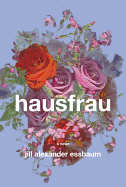 In poet Jill Alexander Essbaum's unsettling first novel, Hausfrau (Random House, $16 paperback), infidelity, psychoanalysis, linguistics and the dissolution of a marriage are delineated as carefully as are the streets and trains of Zurich. Her protagonist, Anna, is a smart, self-aware woman who nonetheless comes undone. --Bruce Jacobs
In poet Jill Alexander Essbaum's unsettling first novel, Hausfrau (Random House, $16 paperback), infidelity, psychoanalysis, linguistics and the dissolution of a marriage are delineated as carefully as are the streets and trains of Zurich. Her protagonist, Anna, is a smart, self-aware woman who nonetheless comes undone. --Bruce Jacobs
The Immune System (Akashic, $15.95, paperback) is the third in Nathan Larson's dystopian NYC trilogy featuring the clever, gimpy, OCD bagman and enforcer Dewey Decimal, and concludes one of the wackiest crime series in years. Holed up in the main branch of the New York Public Library, Dewey finally gets to the bottom of the Valentine's Day terrorist attack that decimated the city, and charts a new course for his life. --Bruce Jacobs
Mia Alvar's In the Country: Stories (Knopf, $26.95) is the rare sort of book that produces a physical reaction--breathlessness, ache, awe. Her stories are peopled by characters so vivid they rival their brilliant, Technicolor landscapes. Feast upon them and come away full, better at being alive. --Linnie Greene
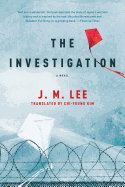 Music, poetry and literature are J.M. Lee's vibrant rose among the deadly thorns of World War II in his first novel published in the United States, The Investigation, trans. by Chi-Young Kim (Pegasus, $24.95). Rich and poignant while also mysterious and suspenseful, The Investigation is intellectually provocative on multiple levels. More J.M. Lee, please. --Jen Forbus
Music, poetry and literature are J.M. Lee's vibrant rose among the deadly thorns of World War II in his first novel published in the United States, The Investigation, trans. by Chi-Young Kim (Pegasus, $24.95). Rich and poignant while also mysterious and suspenseful, The Investigation is intellectually provocative on multiple levels. More J.M. Lee, please. --Jen Forbus
Adrian Tomine, master of the "small gesture," challenged himself visually with the release of his ninth and most ambitious graphic novel to date: Killing and Dying (Drawn & Quarterly, $22.95). The six character-driven short stories of domestic conflict pull readers into familiar worlds with such discomfiting emotional rawness that this almost omniscient book is hard to put down. --Nancy Powell
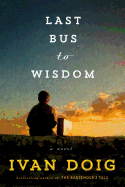 Published four months after his death, Ivan Doig's 16th book, Last Bus to Wisdom (Riverhead Books, $28.95) is a sweet gift from the beloved author, a road-trip story inspired by a bus journey he took as a boy in 1951. Donal Cameron, 11-year-old red-haired word-loving Montanan, reluctantly sets off on a summertime adventure. While poignant, Last Bus to Wisdom is a rollicking, entertaining tale. --Cheryl Krocker McKeon
Published four months after his death, Ivan Doig's 16th book, Last Bus to Wisdom (Riverhead Books, $28.95) is a sweet gift from the beloved author, a road-trip story inspired by a bus journey he took as a boy in 1951. Donal Cameron, 11-year-old red-haired word-loving Montanan, reluctantly sets off on a summertime adventure. While poignant, Last Bus to Wisdom is a rollicking, entertaining tale. --Cheryl Krocker McKeon
Shirley Jackson's Let Me Tell You: New Stories, Essays and Other Writings (Random House, $30): Arriving 50 years after her death, this hefty collection of Jackson's unpublished/uncollected work is an unexpected and delightful surprise. Shirley Jackson is still the queen of blending mounting dread with sublime wit. --Kevin Howell
C.A. Higgins's degree in astrophysics informs every page of her first novel, Lightless (Del Rey, $25), but never gets in the way of good storytelling. The thrilling tale centers on a mysterious military craft that starts showing signs of intelligence in the midst of a hostile boarding. --Rob LeFebvre
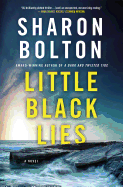 Set in the Falkland Islands, Sharon Bolton's haunting Little Black Lies (Minotaur, $25.99) is about a woman investigating the disappearances of little boys while still grieving the deaths of her own sons. Her former best friend and her ex-lover are struggling with their own demons, and the three characters collide in a climax that's almost O. Henry-ish. --Elyse Dinh-McCrillis
Set in the Falkland Islands, Sharon Bolton's haunting Little Black Lies (Minotaur, $25.99) is about a woman investigating the disappearances of little boys while still grieving the deaths of her own sons. Her former best friend and her ex-lover are struggling with their own demons, and the three characters collide in a climax that's almost O. Henry-ish. --Elyse Dinh-McCrillis
In Hanya Yanagihara's second work, A Little Life (Doubleday, $30), perceptive, friendly prose enriches the lives of her complicated and unruly characters. Her novel fully absorbs its readers into a world of lavish success and bitter cruelty, and moves them to tears. What an accomplishment! --Dave Wheeler
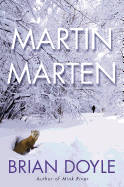 Martin Marten by Brian Doyle (Thomas Dunne Books, $24.99): Doyle's lyrical, fanciful novel set in the Oregon woods awards its nonhuman characters the same weight as its human ones. As young Dave comes of age alongside a marten named Martin, they and the rest of their neighbors find humor, natural beauty and a sense of wonder. --Julia Jenkins
Martin Marten by Brian Doyle (Thomas Dunne Books, $24.99): Doyle's lyrical, fanciful novel set in the Oregon woods awards its nonhuman characters the same weight as its human ones. As young Dave comes of age alongside a marten named Martin, they and the rest of their neighbors find humor, natural beauty and a sense of wonder. --Julia Jenkins
Fredrik Backman proves he's no one-hit wonder (A Man Called Ove) with his delightfully charming, cleverly insightful sophomore novel, My Grandmother Asked Me to Tell You She's Sorry (Atria, $25). Quirky characters inhabit a complexly fantastic world. With tenderness, humor and spirit, Backman adds another twinkling star to the story heavens. --Jen Forbus
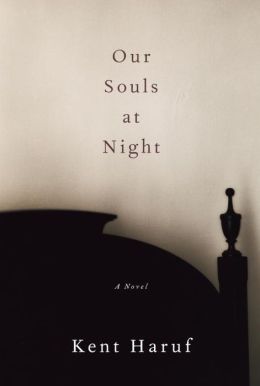 Two reviewers chose Our Souls at Night (Knopf, $24), the tender story of two elderly people seeking each other's solace in a most unconventional fashion. It shares with the late Kent Haruf's previous novels not only their Colorado High Plains setting, but the same meditative mood and acute sensitivity to character. He eloquently explores the terrain of this new relationship, touching on aging, regret, love and the choices we make in our lives. In this wise, bittersweet and beautiful book, he displays his masterly storytelling gifts one last time. --Harvey Freedenberg and Katie Noah Gibson
Two reviewers chose Our Souls at Night (Knopf, $24), the tender story of two elderly people seeking each other's solace in a most unconventional fashion. It shares with the late Kent Haruf's previous novels not only their Colorado High Plains setting, but the same meditative mood and acute sensitivity to character. He eloquently explores the terrain of this new relationship, touching on aging, regret, love and the choices we make in our lives. In this wise, bittersweet and beautiful book, he displays his masterly storytelling gifts one last time. --Harvey Freedenberg and Katie Noah Gibson
Video games are a cultural touchstone for millions of players the world over. Press Start to Play, edited by Daniel H. Wilson and John Joseph Adams (Vintage, $15.95 paperback), collects some of the best short stories on the topic, brilliant and thoughtful short fiction about playing, designing and living within video games that will resonate with present and future readers. --Rob LeFebvre
The Sandman: Overture by Neil Gaiman, illustrated by J.H. Williams III (Vertigo, $24.99): 25 years after he wrote his first issue of The Sandman, Neil Gaiman returned to pen a six-issue prequel and swan song to his influential series that explains how the Master of Dreams became incapacitated by human occultists. J.H. Williams's art is psychedelic, transformative and a treat for long-time Sandman fans. --Nancy Powell
 She Will Build Him a City by Raj Kamal Jha (Bloomsbury USA, $27): The stories of a mother and daughter intertwine with those of a troubled man and a missing orphan, in the sprawling metropolis of Delhi. Raj Kamal Jha has written thrilling, complex novel about the power of love in a cruel world and the need to belong. --Dave Wheeler
She Will Build Him a City by Raj Kamal Jha (Bloomsbury USA, $27): The stories of a mother and daughter intertwine with those of a troubled man and a missing orphan, in the sprawling metropolis of Delhi. Raj Kamal Jha has written thrilling, complex novel about the power of love in a cruel world and the need to belong. --Dave Wheeler
Cancer is never a humorous topic of conversation, but in The Story of My Tits (Top Shelf Productions, $29.95 paperback), Jennifer Hayden is able to turn her experience of cancer, and survival, into a magical and thought-provoking celebration of all things female with an artistic simplicity and quirkiness that evoke a child-like sense of vulnerability and wonder. --Nancy Powell
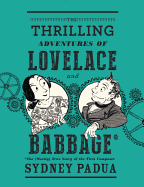 A charming mix of true history and wild steampunk fantasy, Sydney Padua's The Thrilling Adventures of Lovelace and Babbage: The (Mostly) True Story of the First Computer (Pantheon, $28.95) is a cartoon joyride through the exploits of 19th-century computing geniuses Ada Lovelace and Charles Babbage. --Sara Catterall
A charming mix of true history and wild steampunk fantasy, Sydney Padua's The Thrilling Adventures of Lovelace and Babbage: The (Mostly) True Story of the First Computer (Pantheon, $28.95) is a cartoon joyride through the exploits of 19th-century computing geniuses Ada Lovelace and Charles Babbage. --Sara Catterall
The Tsar of Love and Techno: Stories by Anthony Marra (Hogarth, $25) is another choice of two reviewers. In this collection of ingeniously linked stories, Marra returns to the devastated land of Chechnya, the setting of his gorgeous and gut-wrenching novel A Constellation of Vital Phenomena, while expanding his field of vision, with keen insight and humor, to the troubles of the Russian people in the post-Soviet era. He opens with an artist in Leningrad who works as a censor. Following his brother's death, the artist begins to paint subversive additions to the propaganda that create a ripple effect felt across a century, spanning countries and connecting Marra's diverse characters to each other in an extraordinary achievement. --Harvey Freedenberg and Justus Joseph
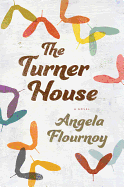 Angela Flournoy's debut novel, The Turner House (Houghton Mifflin Harcourt, $23), could have been a sprawling multi-generational saga or a reflection on urban decay, but it's wisely structured on a more intimate scale, centering on the members of the Turner family and the pull of their old home in a declining Detroit neighborhood. --Florinda Pendley Vasquez
Angela Flournoy's debut novel, The Turner House (Houghton Mifflin Harcourt, $23), could have been a sprawling multi-generational saga or a reflection on urban decay, but it's wisely structured on a more intimate scale, centering on the members of the Turner family and the pull of their old home in a declining Detroit neighborhood. --Florinda Pendley Vasquez
Written in a hybrid "shadow tongue" of Old and Modern English, The Wake by Paul Kingsnorth (Graywolf Press, $16 paperback) is the story of an English landowner named Buccmaster on the eve of the Norman conquest of England. The novel is daunting at first, but before long Buccmaster's voice becomes both easily understandable and captivating. Few historical novels evoke the past as vividly as The Wake. --Alex Mutter
Our Reviewers' Favorites: Fiction
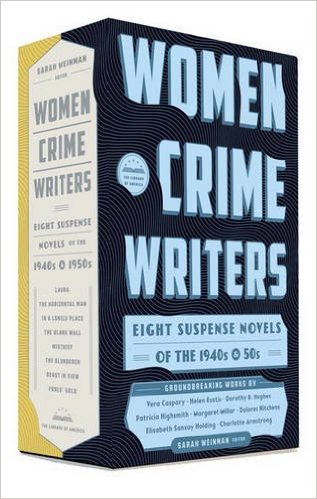 The Library of America can always be counted on for publishing significant books in stylish editions. One is the boxed set Women Crime Writers: Eight Suspense Novels of the 1940s & 1950s, edited by Sarah Weinman ($70). Murder in academia, a serial killer, plus the classic Laura--a timeless mix. For older mysteries, try Sherlock Holmes: The Novels, with an introduction by Michael Dirda (Penguin Classics, $25 paperback). French flaps and deckle edges decorate this classy edition, no matter which Sherlock one fancies. The delightful A Curious Beginning (NAL, $25.95) is a new mystery, but set in 1887 London. With Victoria and Stoker, Deanna Raybourn has created a cranky yet sexy partnership that recalls Sam and Diane on Cheers, or David and Maddie in Moonlighting. An absolute treat.
The Library of America can always be counted on for publishing significant books in stylish editions. One is the boxed set Women Crime Writers: Eight Suspense Novels of the 1940s & 1950s, edited by Sarah Weinman ($70). Murder in academia, a serial killer, plus the classic Laura--a timeless mix. For older mysteries, try Sherlock Holmes: The Novels, with an introduction by Michael Dirda (Penguin Classics, $25 paperback). French flaps and deckle edges decorate this classy edition, no matter which Sherlock one fancies. The delightful A Curious Beginning (NAL, $25.95) is a new mystery, but set in 1887 London. With Victoria and Stoker, Deanna Raybourn has created a cranky yet sexy partnership that recalls Sam and Diane on Cheers, or David and Maddie in Moonlighting. An absolute treat.


 The premise of
The premise of  Bill Clegg's debut novel,
Bill Clegg's debut novel,  In poet Jill Alexander Essbaum's unsettling first novel,
In poet Jill Alexander Essbaum's unsettling first novel,  Music, poetry and literature are J.M. Lee's vibrant rose among the deadly thorns of World War II in his first novel published in the United States,
Music, poetry and literature are J.M. Lee's vibrant rose among the deadly thorns of World War II in his first novel published in the United States,  Published four months after his death, Ivan Doig's 16th book,
Published four months after his death, Ivan Doig's 16th book,  Set in the Falkland Islands, Sharon Bolton's haunting
Set in the Falkland Islands, Sharon Bolton's haunting  Martin Marten
Martin Marten Two reviewers chose
Two reviewers chose 
 A charming mix of true history and wild steampunk fantasy, Sydney Padua's
A charming mix of true history and wild steampunk fantasy, Sydney Padua's  Angela Flournoy's debut novel,
Angela Flournoy's debut novel, 